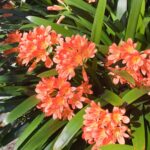Australian native plants are excellent in the garden especially the new varieties of grevilleas, grafted darwinias, banksias, compact and prostrate wattles. An excellent base for a native garden is sandstone rubble. Sometimes this is produced when digging is done to put in a swimming pool. Don’t pay to remove it from your property, instead use it to create a new native garden.
Preparation
Alternatively you can obtain rubble from a sandstone quarry. There is no soil mix – not even soil. This rubble is just lumps of sandstone rock (up to 60cm or 2′ in size) usually with some fine sand left over from quarrying sandstone. It costs around $3 a tonne plus cartage. Not only is it cheap but sandstone rubble is really excellent for growing natives. Ideally you should pile the rubble up 1-2m (3-6′) high in raised beds. It provides perfect drainage plus good anchorage for the roots. The soil mixes available in most areas of Australia are nowhere near as good for growing natives as rock rubble. After creating the raised beds, the area should be topped with composted hardwood sawdust to a depth of about 100mm (4″) and then topped again with 100mm (4″) of composted leaf litter mulch. The natives could be planted directly into this mix. Do not plant into the compost, but rather into the sand mix below it.
Tip: Raised beds are excellent for growing all plants unless you live in deep sandy soil areas such as those often found in Perth.
Best choices
Native plants are fantastic in the garden because they look wonderful, they attract native birds, they grow quickly and they keep Australia looking like Australia. The native plants shown in our segment included Grevilleas, Banksias, grafted Darwinias and lots of wattles, mostly dwarf varieties. The garden will mature quickly in about two years, whereas an exotic garden would take 10 years or more. The garden was fertilised with Debco Green Jacket Formula 5 (for natives), a low-phosphorus slow-release fertiliser which you can order from rural produce stores such as Elders. This method of gardening duplicates the wild conditions for most of these plants and some of the best native gardens are those grown in rubble.
Further information
For more details on the native plants grown in sandstone rubble see the article by Don Burke in the December 1998 issue of the Burke’s Backyard magazine.



